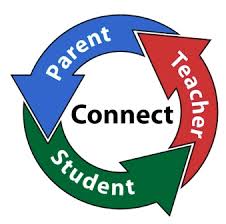This week at our Learning Leadership Team meeting we had a dialogue about parent teacher interviews. Two questions were posed that struck me as interesting.
1. Do we need to schedule parent teacher interview evenings?
2. How could we do the interview differently?
Obviously these were questions to make us leaders think deeper and here are my thoughts…
These evenings have been organized as an opportunity for parents and teachers to come together and discuss student progress in a formalized setting. Parents usually arrive with the student’s most recent report card in hand expecting some sort of explanation from the teacher. With the lives of parents busier than ever, these evenings are quite possibly the first opportunity home and school has been able to connect. These discussions can range from small talk, student behavior, progress and/or lack of progress. What parents are ultimately looking for is strong evidence to back the teacher’s explanation.
So, how do we do this differently and show this strong evidence? We need a better way to share student learning with parents. We need a web based program that makes it easy for teachers to share the vast amount of learning that goes on. In this day and age, teachers should be able to easily capture and attach these nuggets of learning and place them into a web based program for parents to enjoy.
What would this look like?
A parent logs onto a website that posts these nuggets of learning where he or she could see or hear the evidence. A parent might see the following:
1. Audioboo (sound) clips of the student completing an assignment.
2. Video of the student demonstrating these nuggets (outcome, competencies)
3. Scanned document of the student’s work with the teacher comments on the assignment.
4. Video of a teacher leaving comment on the assignment. Eyejot video.
5. A scanned teacher checklist from observing the student in class.
6. A scanned copy of an exit survey from the student.
7. Visual progress on the student’s web based portfolio.
8. An area where parents could leave comments on their own student’s work.
This would clearly show parents exactly what their son or daughter is producing in school (concrete evidence). There are multiple ways that teachers can collect evidence using technology. Though, with that being said, teachers need to have the appropriate technology on hand, an awesome web based program to demonstrate the student learning through multiple avenues, the professional development as to how to properly collect specific learning evidence, and the time to place this large volume of data on a web-based program. With this type of evidence based reporting, we could then cut down on parent teacher interviews.
I think interviews would still be needed, but only on a request basis. I also think in the near future that we will report concrete evidence. But for now, until we change how we report grades, this will be tough to do without interviews.
















